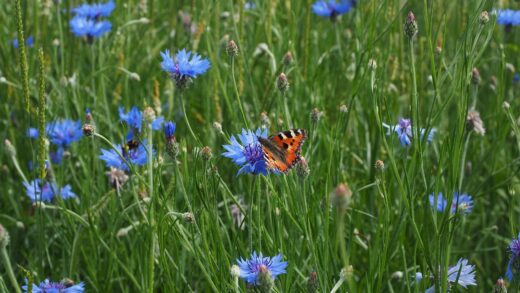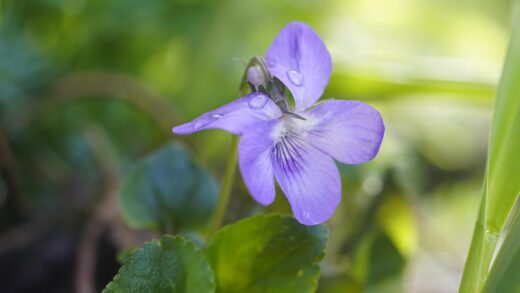Azaleas, with their stunning displays of color, are a jewel in any garden, but unlocking their full potential requires a nuanced understanding of their specific needs. These plants are not your average garden shrub; they belong to the Rhododendron genus and, as such, have a clear set of preferences that distinguish them from many other ornamentals. Successfully cultivating azaleas is a rewarding endeavor that begins with respecting their origins as woodland understory plants. This means providing them with the right environment, a consistent care routine, and a watchful eye for any signs of distress. Embracing these foundational principles is the first step toward achieving the lush foliage and profuse blooms that make azaleas a cherished favorite among discerning gardeners.
Proper care begins with a deep appreciation for the plant’s natural habitat, which dictates its fundamental requirements in a cultivated setting. Most azalea varieties thrive in conditions that mimic a forest floor: dappled sunlight, protection from harsh winds, and soil that is rich in organic matter. They are acid-loving plants, a critical detail that influences everything from soil preparation to long-term feeding strategies. Ignoring this single, most important characteristic is the primary reason many gardeners struggle to keep their azaleas healthy. Therefore, all care practices must revolve around maintaining an acidic environment and providing the cool, moist, and well-drained root zone they have evolved to prefer over millennia.
The annual life cycle of an azalea also guides the timing of essential care tasks, ensuring that your interventions support the plant’s natural rhythms rather than disrupting them. For instance, the period immediately following their spectacular spring bloom is a crucial window for pruning and fertilizing, as this is when the plant focuses its energy on developing new growth and setting the flower buds for the following year. Applying fertilizers too late in the season can stimulate tender new growth that is susceptible to winter damage. Similarly, pruning at the wrong time, such as in the autumn or winter, will inadvertently remove the very buds that would produce the next spring’s floral display.
Finally, consistent observation is perhaps the most vital tool in a gardener’s arsenal for azalea care. A healthy azalea will have deep green leaves (or a healthy color appropriate for its variety) and vigorous growth. Any deviation from this norm, such as yellowing leaves, wilting, or the appearance of spots, is a signal from the plant that something in its environment is amiss. By regularly inspecting your plants, you can catch potential issues like pest infestations, nutrient deficiencies, or watering problems early on, when they are much easier to remedy. This proactive approach to care is far more effective than reacting to a problem that has already become well-established.
The importance of site selection
Choosing the correct location for your azalea is the most significant decision you will make for its long-term health and vitality, outweighing almost any other aspect of its care. These plants have a strong preference for partial shade or filtered sunlight, particularly protection from the intense, hot afternoon sun which can easily scorch their leaves and cause stress. An ideal spot would be under the canopy of tall, deep-rooted trees like oaks or pines, which provide the dappled light that closely resembles their native woodland environment. Planting on the north or east side of a structure can also provide the necessary shelter from the harshest sun rays of the day.
The soil in your chosen location must be acidic, with a pH typically ranging between 4.5 and 6.0. Before planting, it is highly advisable to conduct a soil test to determine your baseline pH level. If your soil is naturally alkaline, you will need to amend it significantly or consider planting your azaleas in raised beds or containers where you have complete control over the soil composition. Incorporating generous amounts of organic matter such as composted pine bark, oak leaf mold, or peat moss is an excellent way to both lower the soil pH and improve its structure. This creates the well-aerated, humus-rich environment in which azalea roots thrive.
Good drainage is another non-negotiable requirement for a successful azalea site. These plants have fine, shallow root systems that are extremely susceptible to root rot if left in waterlogged soil. Avoid low-lying areas in your garden where water tends to collect after heavy rainfall. If you are dealing with heavy clay soil, amending it is not enough; you must plant the azalea with its root ball slightly elevated above the surrounding soil level. Creating a gentle mound and then mulching around it helps ensure that excess water drains away from the delicate root system efficiently.
Lastly, consider the plant’s need for protection from harsh environmental elements. Strong, drying winds can be particularly damaging, causing moisture loss from the leaves (desiccation) faster than the roots can absorb it, leading to brown, crispy leaf edges, especially in winter. Planting near a windbreak such as a fence, a wall, or a grouping of other evergreen shrubs can provide essential shelter. This protection is not just about comfort; it is a critical factor in the plant’s ability to survive winter extremes and emerge healthy and ready to bloom in the spring.
Watering and moisture management
Proper watering is a delicate balance when it comes to azaleas, as they require consistent moisture but are extremely intolerant of saturated, soggy conditions. The goal is to keep the root zone evenly moist, like a well-wrung-out sponge, but never waterlogged. The fine, fibrous root system of an azalea resides primarily in the top layer of soil, which can dry out quickly, especially during warm and windy weather. Therefore, frequent, deep waterings are more beneficial than shallow, light sprinklings that only wet the surface. A thorough soaking allows the water to penetrate the entire root zone, encouraging deeper root growth and improving drought tolerance.
The frequency of watering will depend heavily on your climate, soil type, and the age of the plant. Newly planted azaleas require the most diligent attention to watering, as their root systems are not yet established. They may need to be watered two to three times per week during their first growing season, especially in the absence of rain. Mature, well-established plants, however, are more resilient but will still need supplemental watering during extended dry spells. The best way to determine if an azalea needs water is to feel the soil; if the top two to three inches feel dry to the touch, it is time to provide a deep soaking.
The quality of the water you use can also have a significant impact on these acid-loving plants. Many municipal water sources are treated and can be alkaline, which, over time, can gradually raise the pH of your soil. This shift in pH can lock up essential nutrients like iron, leading to a condition called chlorosis, which manifests as yellowing leaves with green veins. Whenever possible, using collected rainwater is the ideal solution as it is naturally soft and slightly acidic. If you must use tap water, allowing it to sit for 24 hours can help some of the chlorine dissipate, and regularly monitoring and amending your soil’s pH becomes even more critical.
Applying a layer of organic mulch is one of the most effective strategies for moisture management. A two- to three-inch layer of pine bark, pine straw, or shredded oak leaves spread over the root zone helps to conserve soil moisture by reducing evaporation. Mulch also suppresses weed growth, which would otherwise compete with the shallow-rooted azalea for water and nutrients. Furthermore, as the organic mulch breaks down over time, it contributes to the soil’s acidity and enriches it with valuable organic matter, creating a healthier environment for the plant’s root system. Be sure to keep the mulch a few inches away from the main stem to prevent rot and allow for air circulation.
Feeding and nutrition for vibrant blooms
Fertilizing azaleas is essential for promoting vigorous growth and ensuring a spectacular display of flowers, but it must be done with care and precision. These plants are sensitive to over-fertilization, and using the wrong type of product can do more harm than good. Always opt for a fertilizer specifically formulated for acid-loving plants, often labeled as an “azalea/rhododendron/camellia feed” or “ericaceous feed”. These specialized formulas contain nutrients in a form that is readily available to plants in low-pH soil and typically include ammonium sulfate to help maintain the desired acidity. Following the application rates recommended on the product label is crucial to avoid burning the delicate, shallow roots.
The timing of fertilizer application is just as important as the choice of product. The primary feeding should occur in late winter or early spring, just as new growth begins to emerge. This provides the plant with the necessary nutrients to support the development of leaves and the impending bloom. A second, lighter application can be made immediately after the flowering period has finished. This post-bloom feeding helps the plant recover its energy and, most importantly, fuels the development of the flower buds that will provide next year’s show. Avoid fertilizing azaleas after late summer, as this can encourage a flush of new, tender growth that will not have time to harden off before the first frost and is likely to be damaged by the cold.
Understanding the signs of nutrient deficiencies is key to providing targeted care. The most common nutritional issue seen in azaleas is iron chlorosis, which occurs when the soil pH is too high, making iron unavailable to the plant. This condition is easily identified by the characteristic yellowing of the leaves, while the veins remain dark green. If you observe these symptoms, a standard fertilizer application may not be enough. You will need to address the root cause by lowering the soil pH using amendments like elemental sulfur or iron sulfate. A foliar spray of chelated iron can provide a quick, temporary green-up, but long-term correction of the soil’s chemistry is the only permanent solution.
In addition to granular or liquid fertilizers, incorporating organic matter into the soil is a superb long-term feeding strategy. Amending the soil with compost, leaf mold, or well-rotted pine bark at planting time provides a slow-release source of nutrients and improves soil structure. Furthermore, maintaining a two- to three-inch layer of organic mulch, such as pine straw or oak leaves, serves a dual purpose. As the mulch slowly decomposes, it continuously releases small amounts of nutrients into the soil and helps to sustain the acidic conditions that azaleas require. This holistic approach to nutrition creates a resilient, healthy plant that is better equipped to resist pests and diseases.
Pruning and shaping your azalea
Pruning is an important aspect of azalea care that helps maintain the plant’s health, shape, and flowering potential, but it is often misunderstood and performed at the wrong time. The most critical rule to remember is that azaleas bloom on old wood, meaning they form their flower buds during the summer and autumn for the following spring. Therefore, the ideal and only time to prune your azalea is within a three-week window immediately after it has finished blooming. Pruning at any other time of the year, especially from late summer through winter, will result in the removal of the developing flower buds, sacrificing the next season’s floral display.
The goals of pruning can be varied, from simple maintenance to more significant reshaping. The most common type of pruning involves “deadheading,” which is the removal of spent flower trusses. This practice is not just for aesthetic reasons; it prevents the plant from expending energy on developing seeds and instead redirects that energy into vegetative growth and setting more flower buds for the next year. You can simply snap the old flower clusters off with your fingers or use small pruning shears, being careful not to damage the emerging new leaf buds just below the flower head.
For general shaping and size control, you can selectively cut back branches that are overgrown, out of place, or detract from the plant’s overall form. Always use sharp, clean pruning shears or loppers to make your cuts. Trace the branch you wish to shorten back to a point where it joins a larger branch or where a leaf or a cluster of leaves is growing, and make the cut just above this point. This encourages the plant to branch out from the cutting point, resulting in a fuller, more compact shrub. Avoid giving the plant a sheared, box-like appearance, as this destroys its natural graceful form and can reduce flowering.
In cases where an azalea has become severely overgrown, leggy, and sparse, a more drastic “renewal” or “rejuvenation” pruning may be necessary. This involves cutting the entire plant back hard, to within 6 to 12 inches of the ground. This should be done in late winter or early spring, with the understanding that you will be sacrificing the blooms for that year, and possibly the next. This severe pruning stimulates the growth of new canes from the base of the plant, effectively creating a brand new, more compact shrub over the next few years. It is a stressful process for the plant, so it should only be performed on healthy, well-established specimens and followed by diligent watering and care.
Dealing with pests and diseases
Even with the best care, azaleas can sometimes fall victim to a range of pests and diseases that can mar their beauty and compromise their health. Proactive monitoring is the key to effective management, as early detection allows for intervention before an infestation or infection becomes severe. One of the most common pests is the azalea lace bug, a small insect that feeds on the underside of the leaves. Their feeding activity creates a stippled, bleached, or silvery appearance on the upper leaf surface, while the undersides will be covered in dark, varnish-like spots of excrement. To control them, you can use insecticidal soap or horticultural oil, ensuring thorough coverage of the leaf undersides where they reside.
Another group of pests that frequently trouble azaleas are various species of mites, such as spider mites. These tiny arachnids are difficult to see with the naked eye but their damage, similar to lace bugs, causes a stippling or bronzing of the foliage. You might also notice fine webbing on the leaves and stems in a heavy infestation. Mites thrive in hot, dry conditions, so ensuring your azaleas are well-watered can help deter them. A strong spray of water from a hose can physically dislodge many mites, while applications of horticultural oil or miticides are effective for more significant populations.
On the disease front, petal blight is a frustrating fungal issue that directly affects the beautiful blooms. Caused by the fungus Ovulinia azaleae, it appears as small, water-soaked spots on the petals which quickly enlarge, causing the entire flower to turn into a slimy, brown mass that clings to the plant. The fungus overwinters in the soil, so good sanitation is crucial. Removing and destroying infected flowers immediately, and replacing the top layer of mulch under the plant after blooming can help break the disease cycle. Applying a suitable fungicide just as the flower buds begin to show color can provide preventative protection in areas where petal blight is a known problem.
Root rot is perhaps the most serious and often fatal disease for azaleas, and it is almost always a result of poor drainage and overwatering. Caused by water mold fungi like Phytophthora, the symptoms above ground include wilting, yellowing leaves, and overall plant decline, which can be confusingly similar to the symptoms of drought. However, an inspection of the roots will reveal they are brown, mushy, and unhealthy instead of firm and white. Prevention is the only effective cure; always plant azaleas in well-draining, acidic soil and avoid overwatering. Once a plant is severely infected, it is very difficult to save and is often best removed to prevent the spread of the fungus in the soil.


















